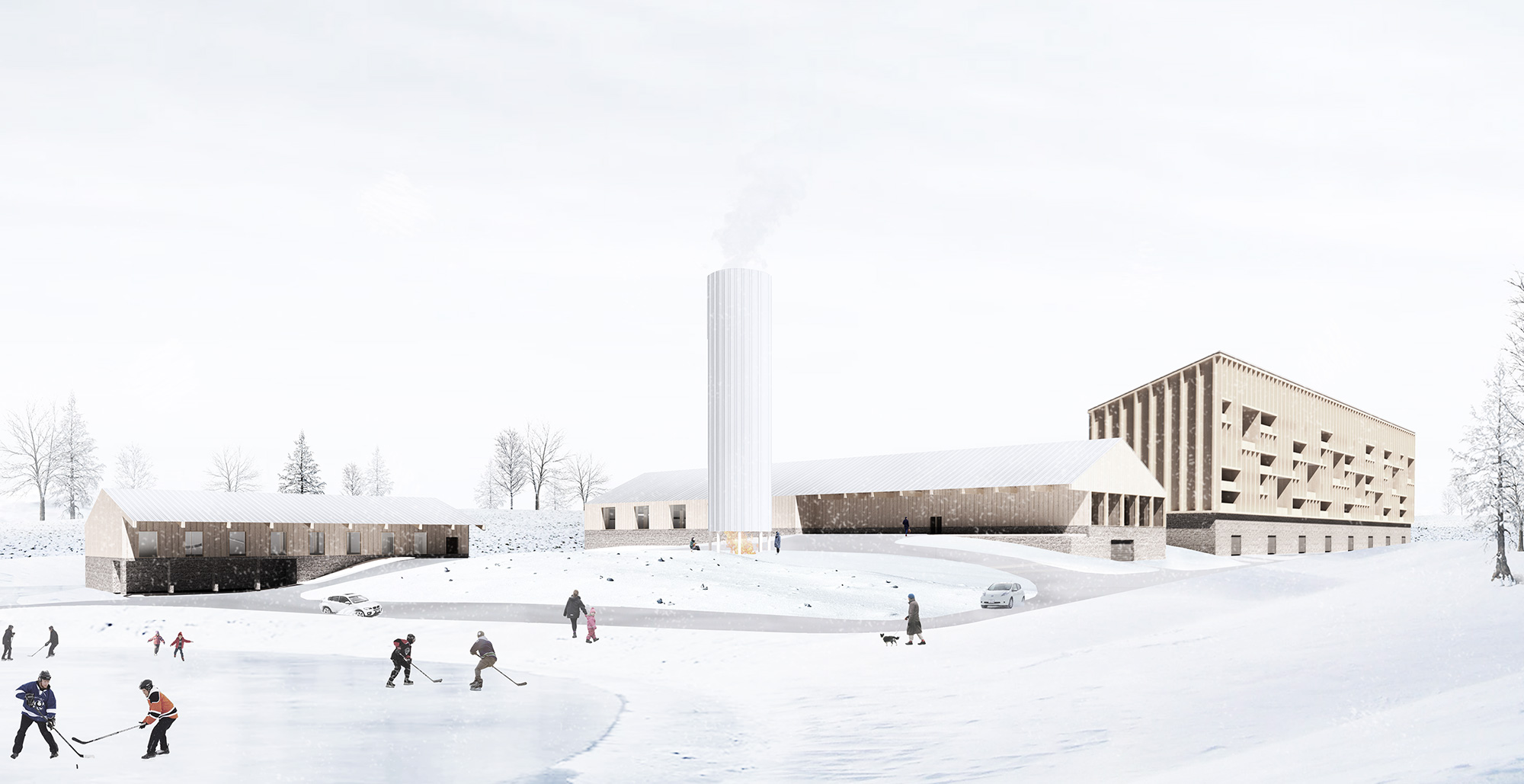
Jonathan Miura, "Saving Grace"
Jonathan grew up in Clarington, a small town located about 80 kilometres away from downtown Toronto. There, as in many rural communities located within easy driving distance of urban centres, the dominant form of housing is the suburban-style detached house — a large structure with its own driveway, lawn, and backyard. A developer might build a subdivision consisting of hundreds of these types of homes, creating suburban sprawl in what used to be wilderness, or farmland.
For his thesis project, Jonathan decided to design an alternative type of housing for Toronto's exurbs — one that would give homeowners many of the same freedoms they would expect from an ordinary detached house, but without the necessity for a sprawling subdivision.
"The biggest challenge was to question how this demographic of individuals who have intentionally selected detached residential homes can be helped to think differently — made to understand that they can potentially have a similar lifestyle, but in a more sustainable way," Jonathan says.
The solution he settled on was — at least, for the countryside — a radical one. Rather than individual houses, he decided to design a mid-rise structure with six storeys and 48 separate dwelling units: high-density housing — but with a distinctly rural attitude.
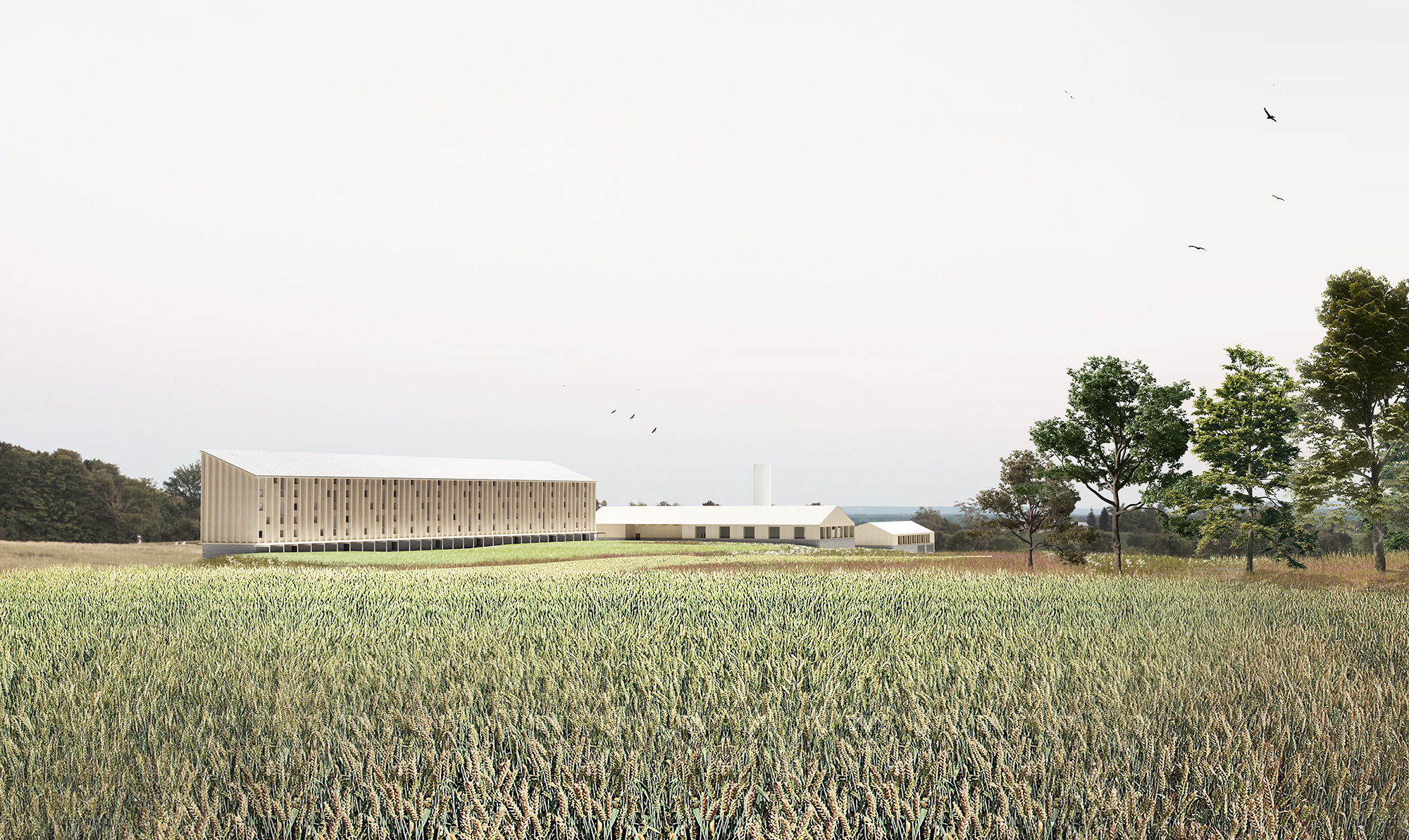
A rendering of Jonathan's mid-rise residential building.
The structure's 48 housing units are stacked, meaning the building is internally split into three levels — lower, middle, and upper — each with 16 households. Each "stack" of three households shares a lower-level parking garage. In order to preserve the feeling of privacy that comes with owning a detached house, Jonathan gave each home its own private entrance, accessed by an elevator shared with the two other units in its stack.
"Instead of walking from grade up to someone's front door, the elevator drops you off on someone's exterior terrace," Jonathan says. "It maintains the nature of detached housing in that way. There's still a moment when you arrive at someone's house and you can knock on the front door before entering, rather than entering through a corridor."
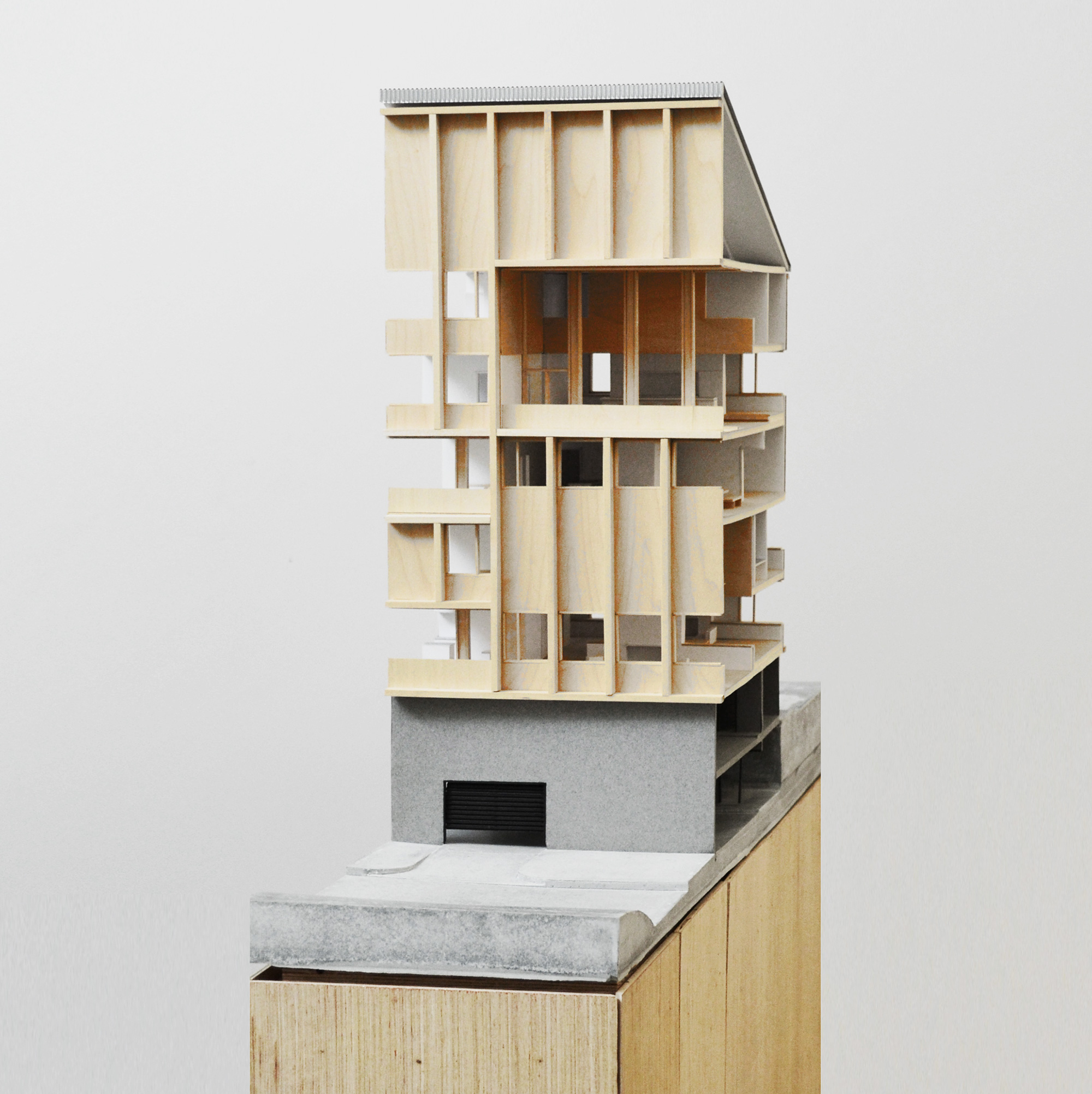
A model showing the interiors of three stacked dwelling units.
Because he was trying to emulate the feeling of living in a detached home, it was important to Jonathan that the housing units in his mid-rise building be very large. Most of the units are around 4,500 square feet, and they come in a variety of floor plans. There are two-storey units, one-and-a-half-storey "loft" units, and "bungalow" units designed to approximate the feel of a single-storey detached home. Jonathan also included a few smaller units, for use as affordable housing. "They're similar to an apartment in someone's basement," he says. "They would be supplemented through the development as a way of providing more opportunity for people to live in the countryside."
By compressing 48 suburban-sized homes into a single six-storey building, Jonathan was able to preserve a great deal of land on his site for other purposes. Rather than leave all that space vacant, he decided to design some shared community amenities. One structure houses a public pool, which would be open not only to residents of the building, but also to other residents of the town. "Detached homes have their own private pools, but I was trying to step away from private luxury and towards collectivity," Jonathan says. "The project is partially about creating ties between an influx of residents and the existing community."
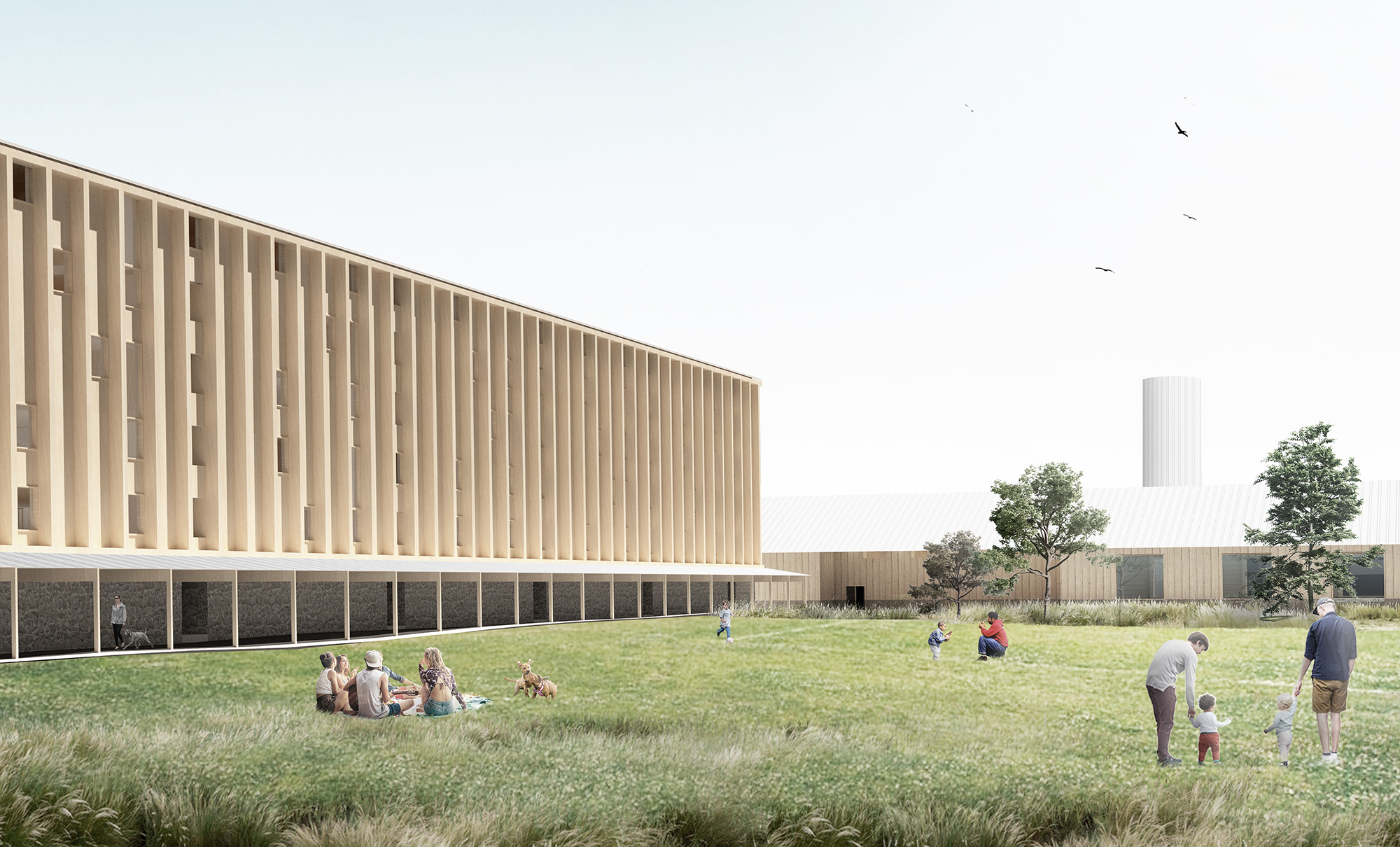
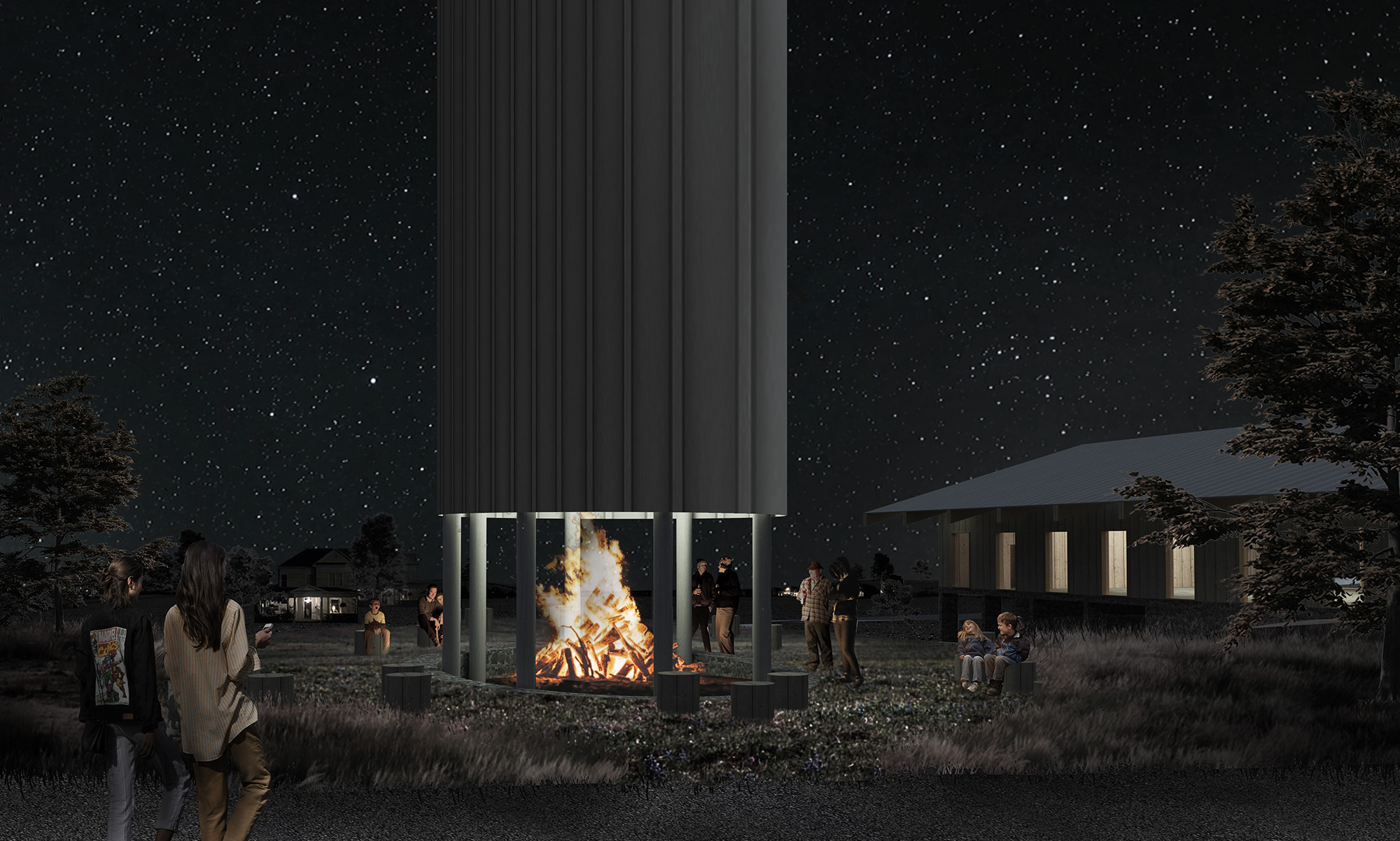
Top: Residents play on a communal field, with the public pool building in the background. Bottom: Underneath the silo.
Another structure would be a multipurpose community centre, where residents could host small markets, school-related gatherings, or social events. At the centre of the site plan is a large firepit with a tall, cylindrical chimney. The resemblance to a silo is intentional: the structure evokes a familiar rural landscape, while also providing a convenient locus for community activity.
Advisor: Vivian Lee

